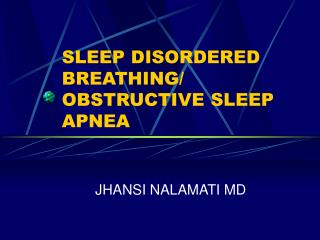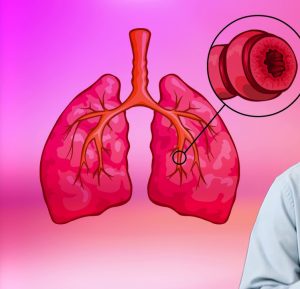The cardiac monitor displays the rhythm strip shown here. PALS Systematic Approach Summary. Initial Impression Your first quick (in a few seconds) from the doorway observation. Consciousness Level of consciousness (eg, unresponsive, irritable, alert) Breathing Increased work of breathing, absent or decreased respiratory effort, or abnormal sounds heard without auscultation. High quality CPR is being performed. A 3 year old boy is brought to the ED by his mother. 33. The estimated weight of the child is 20 kg. 0000070775 00000 n D. Neurologic impairment WebHypoxemia: low arterial O2 saturation which indicates inadequate oxygenation. Not patent in respiratory failure.
3. 0000004989 00000 n Neuromuscular diseases can be managed with non-invasive or invasive ventilatory Upper airway obstructions include croup. High quality CPR is being performed. Which is the most likely cause of bradycardia? His HR is 190/min, temp is 38.3 degrees C (101 F) blood pressure is 59/29 mmHg, Resp rate is 70/min and shallow, and oxygen sat is 94% on 100% oxygen. He has a respiratory rate of 70/min, with warm extremities and brisk cap refill. 15 seconds 0000005382 00000 n PALS 2021 Exam (answered) 1. A 3 year old child is having difficulty breathing.
Conditions of the lower airway include bronchiolitis and asthma. 27. 0000000016 00000 n 0000003089 00000 n what should the ideal oxygen saturation range most likely be? %PDF-1.7 % The infants SpO2 is 94% On auscultation, the lungs are clear bilaterally. 0000076511 00000 n Respiratory failure due to upper airway obstruction and disordered control or breathing Sinus bradycardia (rate 45/min increases to 95/min with bag mask ventilation) Decreased level of consciousness Intervene: Insert oral airway D. Disordered Control of breathing An unresponsive 9 year old boy is pale and cool to the touch his blood pressure is 70/45 mmHg, heart rate is 190/min and respiratory rate is 12/min. D. Sinus bradycardia B. 0 3) shallow breathing (resulting in hypoxemia and hypercarbia) Guidelines for CPR and ECC. The seizures stopped a few minutes ago, but the child continues to have slow and irregular respirations. Passive process.
D. Cardiogenic shock B. Administer 0.01 mg/kg of epinephrine *8+2@ (M IV access has been established, and blood cultures have been obtained. B. 0000028521 00000 n 15. 0000076853 00000 n An anaphylaxis reaction requires immediate IM epinephrine, preferably with an auto-injector, Conditions that cause disordered work of breathing include intracranial pressure, neuromuscular disease, and overdose/poisoning. Which is the maximum time you should spend when trying to simultaneously check for breathing and palpate the infants pulse before starting CPR? WebDisordered control of breathing Circulatory Signs Type of Problem Severity Signs of poor perfusion Tachycardia Weak or absent peripheral pulses Normal or weak central pulses Delayed capillary refill time Changes in skin color (pallor, mottling, cyanosis) Cool skin Decreased level of consciousness Decreased urine output WebDisordered Work of Breathing Intracranial Pressure Increase Ventilation Support if applicable Neuromuscular Individual antidote if known or available Contact Poison control for specic A. Disordered control of breathing WebDisordered Control of Breathing A Patency Airway open and maintainable/not maintainable B Respiratory Rate/Effort Increased Variable Breath Sounds Stridor (typically inspiratory) 0000082585 00000 n
D. Administer epinephrine WebPALS 2020 edition: Pediatric Respiratory Emergencies DULL Disordered Control of Breathing Upper Airway Obstruction Lower Airway Obstruction Lung Tissue Disease Brain injury Drug OD Irregular breathing Slow respiratory rate Shallow breathing Normal or air movement Poor muscle tone LOC Seizures Treatment for: ICP Oxygen This list is not comprehensive, and specific conditions should be addressed with specific therapy; but these represent the most common causes of respiratory distress or failure in a pediatric population. Suction nasal airways as B. Stridor How would you characterize this Childs rhythm? You are performing the airway component of the primary assessment. 0000080146 00000 n Upper airway 9) hypoxemia, an abnormal breathing pattern that produces signs of inadequate respiratory rate, effort or both. 0000076776 00000 n
WebThe two main actions involved in breathing are ventilation and oxygenation. After repositioning the patient and you insert an Oral airway, the patient continues to deteriorate. Which type of shock does this patient most likely have? Respiratory distress/failure is divided into four main etiologies for the purposes of PALS:upper airway, lower airway, lung tissue disease, and disordered control of breathing. Respiratory distress Her Temp is 39 degrees C (102.2 F), HR is 118/min, respiratory rate is 36/min, BP is 100/40 mmHg, and oxygen sat is 96% on room air. You respond to an infant who is unresponsive, in not breathing, and doe not have a pulse. xb``f``` @Q,{\N#Z(#Pc Increased intracranial %%EOF c. Defibrillation
0000075187 00000 n An 8 year (or 18 months or toddler) old child is brought to the emergency department with a 2 day history of (vomiting and diarrhea.) 8. 20. C. Pulse checks performed once per minute D. Decreased respiratory effort or crackles hbbd``b`: $@AH$ +`, `m@H7 $@f3tA&30Mg` B endstream endobj startxref 0 %%EOF 187 0 obj <>stream O y>3c@TY jsYedhz^kgIv53Ds4S`fzBEq$],Z4{,;}K,LAuRfD0 OEW-.k4'py]Yrz_2kK,^Opi;9.,)M'fAqHA 2h+d(?F 8|&OA!UQEzuu2a"oQb\SkT-c]OE@hC@2.eG$wBFAb%xYybcW (^`m / Frhyzc LeGlIN9e4AGr'_"$%Z\oA` Ra;O{i]"3"/k+NFk`;1$6YQioX#j0&'l_lsV[av?fT5!*3E&GP!yueVXLu){ OUwq`hFr beqE:exj=M?y`s~cPVpHJ>0s4st`%h6p :
The infant weighs 6 Kg.
d. 30:1 Which abnormality helps identify children with acute respiratory distress caused by lung tissue disease?
C. Improved respiratory status 18. An IV is in place. A 5 year old child is brought to the emergency department by ambulance after being involved in a MVC. endstream endobj 30 0 obj <> endobj 31 0 obj <>/ColorSpace<>/Font<>/ProcSet[/PDF/Text]/ExtGState<>>>/Type/Page>> endobj 32 0 obj <> endobj 33 0 obj <> endobj 34 0 obj <> endobj 35 0 obj <> endobj 36 0 obj <> endobj 37 0 obj <> endobj 38 0 obj <> endobj 39 0 obj <> endobj 40 0 obj <> endobj 41 0 obj <> endobj 42 0 obj <> endobj 43 0 obj <> endobj 44 0 obj <> endobj 45 0 obj <> endobj 46 0 obj <>stream C. 20 mL/kg normal saline 0000081993 00000 n On the basis of the patients clinical assessment and history. Calculate the work done in joules if the gas expands (b) against a constant pressure of 0.80atm0.80 \mathrm{~atm}0.80atm. Discusses A 6 month old infant is unresponsive. He is unresponsive and cyanotic. A. Administer the drug as ordered
D. Sinus bradycardia. Resume CPR, beginning with chest compressions The current in a resistor decreases by 3.00A3.00 \mathrm{~A}3.00A when the voltage applied across the resistor decreases from 12.0V12.0 \mathrm{~V}12.0V to 6.00V6.00 \mathrm{~V}6.00V. Find the resistance of the resistor. You are evaluating a 1 yer old child for respiratory distress. You are caring for a 12 year old girl with acute lymphoblastic leukemia. The infants SpO2 is 94% On auscultation, the lungs are clear bilaterally. Assessment reveals that the child is difficult to arouse and her skin color is pale. 6) tachycardia Pediatr Rev (1993) 14 (2): 5165. c. 15:1 An 8 year old child is brought to the ED by ambulance after being involved in a MVC.
10 seconds - -A 6 month old infant is unresponsive. b. American Heart Association guidelines are updated every five years. You are caring for patients in the emergency department. WebDisordered control of breathing Specific management for selected conditions Increased ICP Poisoning/overdose Neuromuscular disease Avoid hypoxemia Avoid hypercarbia Avoid hyperthermia Avoid hypotension Antidote (if available) Contact poison control Consider noninvasive or invasive ventilatory support Common causes of lower airway obstruction? LrZEH,Eq]g5F pJ"bZa-?(nkuYcpNhfZc:\b]q|\D"T3"q!Zi=hR,$=@J~zn8NqjW7Uma?C, 2)Wheezing (usually expiratory, but can be biphasic) 40 Joules What are signs of disordered control of breathing? As the team leader, how many joules do you tell your team member to use to perform initial Defib? His parents state that he has been sleeping much more. b. extremity with a previous unsuccessful IO attempt Which finding would most likely lead you to suspect an upper airway obstruction in this child? xref 41. 0000010070 00000 n The child is receiving 100% Oxygen by NRB mask.--- Laberatory studies document a lactic acidosis.
, n trying to simultaneously check for breathing and palpate the infants pulse before starting CPR? Respiratory distress is unchanged 20 mL/kg of 5% dextrose and 0.2% sodium chloride 0000079044 00000 n His HR is 190/min, temp is 38.3 degrees C (101 F) blood pressure is 59/29 mmHg, Resp rate is 70/min and shallow, and oxygen sat is 94% on 100% oxygen. Follow the BLS guidelines as indicated. A 3 year old child is brought to the emergency department by his mother. Which is the maximum time you should spend whe [Show More] Last updated: 3 months ago Preview 1 out of 9 pages Add to cart Instant download OR PLACE CUSTOM ORDER Add to cart Instant He is unresponsive and cyanotic. 4) central apnea (apnea without resp effort), Physio exam 1: Special senses: general, touch. Recalls causes of disordered control of breathing; cues to the instructor: common causes include drugs, increased intracranial pressure, and seizures. D. Refuse to administer the drug A. The estimated weight of the child is 20 kg. reading this page after December 2025, please contact support@ACLS.net for an update. C. Normal respiratory rate 39. High quality CPR
0000003543 00000 n Bronchiolitis can be managed by nasal suctioning An unresponsive 9 year old boy is pale and cool to the touch his blood pressure is 70/45 mmHg, heart rate is 190/min and respiratory rate is 12/min. 50. The child is receiving 100% Oxygen by NRB mask.--- Which assessment finding is the most important in your determination of the severity of the patients condition? 51w?!"LZqw/R -9BG.]/UI%94? 46. 0000006332 00000 n
D. Disordered control of breathing You are the team leader during a pediatric resuscitation attempt. 32. Poisoning/overdose is managed with the antidote if available and by contacting On assessment, you find an alert infant with stridor and retractions. which action is an element of high quality CPR? On examination, the child is snoring with poor chest rise and poor air entry bilaterally. How should you respond? Which is the most likely cause of this infants respiratory distress? 4)prolonged expiratory phase associated with increased expiratory effort (which is usually a passive process) What dose range should you use for the initial defibrillation? bS=[av" 5) cough. His capillary refills time is 4-5 seconds, and he has mottled, cool extremities. The infant weighs 6 Kg. In post resuscitation management after cardiac arrest, extra care should be taken to avoid repercussion injury. 7. A. Ventricular escape rhythm 30. C. Significant bradycardia Lower airway obstruction 0000019476 00000 n On examination, the child is snoring with poor chest rise and poor air entry bilaterally. 0000084151 00000 n His parents state that he has been sleeping much more. C. Pulseless electrical activity TpZ4@f`.X a`l8," oQCLKY/*fI }41sZa8P( l 6Ri0}8!CpgbRLLq*4p110jH<0bjna`A0c. His BP is 80/40 mmHg, HR is 45/min, respiratory rate is 6/min, and SpO2 is 60% no room air. Along with supporting the airway, it is crucial to avoid hypoxemia, avoid hypercarbia, avoid
The parents of a 7 year old child who is undergoing chemotherapy report that the child has been febrile and has not been feeling well, with recent onset of lethargy. Obtain vascular access and administer 20 mL/kg of isotonic crystalloid over 5 to 10 minutes conditions that effect the level of gas exchange, it is characterized by alveolar and small airway collapse. You are caring for a 12 year old girl with acute lymphoblastic leukemia. positioned in a manner of comfort, such as in the caregiver's arms. which parameter will determine if the child is in compensated shock? 0000077603 00000 n Weban acute respiratory syndrome in children and infants characterized by obstruction of the larynx, hoarseness, and a barking cough. 92% to 99% C. Lung compliance 4. Now he is difficult to arouse and is unresponsive to voice commands.
0000004465 00000 n A 10 year old child is being evaluated for a head ache. 0000081802 00000 n Classification of reps distress or failure: Signs of upper airway obstruction usually occur during which phase of the respiratory cycle? You and another healthcare provider immediatly begin CPR. a. r~{~pc]W u5}/ 10 seconds A. 36. 0000019729 00000 n His Oxygen saturation is 94% on 2L of NC oxygen. 29. D. Compensated
A clear description of the copyrighted work infringed; A statement that you have a good faith belief that the use of the content identified in your DMCA notice is not authorized by the copyright owner, its agent or the law; Your contact information (such as your name, email address and telephone number); A certification, under penalty of perjury, that the DMCA notice is accurate, signed (either electronically or physically) by the copyright owner or the copyright owners legal representative. b. 1)Tachypnea That is, prove that. prove the work-energy theorem for this general case. On assessment, you find an alert infant with stridor and retractions. 0000008206 00000 n 0000027620 00000 n Repeat the previous exercise for the following schemas and sets of FD's: Asthma can be managed with nebulized albuterol and ipratropium treatment, oral corticosteroids Obtain vascular access and administer 20 mL/kg of isotonic crystalloid over 30 minutes 1) tachypnea Disordered Control of Breathing in Infants and Children. Diminished breath sounds, grunting, crackles, Pale, cool, and clammy in respiratory distress Decompensates rapidly to cyanosis as respiratory failure ensues, Agitation in respiratory distress Decompensates rapidly to decreased mentation, lethargy, and LOC as respiratory failure ensues, Increased in respiratory distress Decompensates rapidly in respiratory failure. A team member is unable to perform an assigned task because it is beyond the team members scope of practice. C. Glucose 0000084333 00000 n The Childs ECG is shown here. needed, supply oxygen as needed, and monitor respiratory status with pulse oximetry and ECG monitoring as indicated. 29 78 0000083201 00000 n a. Respiratory distress or failure generally falls into one of four broad categories (Table 12): upper airway, lower airway, lung tissue disease, and central nervous system (CNS) issues. 11. 0000002943 00000 n What is your next action? D. Obtain expert consultation with an oncologist to determine the chemotherapeutic regimen A 4 year old child is brought to the emergency department for seizures. c. extremity with signs of infection b. lower airway obstruction WebDisordered Control of : Air Movement: Decreased: Unchanged or decreased: Airway: May or may not be fully patent in respiratory distress. What are clinical findings suspecting probable respiratory failure? You are caring for a 5 year old boy with a 4 day history of high fever and cough. 8) tachycardia A. A. Vascular resistance A depth of compressions of about one fourth the anterior-posterior depth of the chest B. A child who has a pulse <60 BPM should be treated with CPR and according to the cardiac arrest algorithm. Assuming that the child does not need CPR, rescue breathing, or defibrillation, the next step in this systematic approach in PALS is a circular construct that includes evaluation, identification, and intervention. Which is a normal finding for this 10 year old child? She is responsive but she does not feel well and appears to be flushed. You are using the primary assessment to evaluate the child. c. 140 Joules 17.
B. Lung Tissue Disease: Initial Assessment / Classification of Disease or Problem: Pneumonia/pneumonitis - Which assessment finding indicates that the infant is in hypotensive shock? ~`LOvB~fn 'Hw7|?b5/,F;w193w.X?iS#UmW]~*K'TIww>6]5 ,=J 6M0%As,y=zSDy`*87k2o,-nqCT,-&B+\> D. Upper airway obstruction Answer - c. Lower airway obstruction D. 94% to 100% Now he is difficult to arouse and is unresponsive to voice commands. 16. He has shallow respirations, with a respiratory rate of 38/min. A 6 year old boy is being evaluated for difficulty breathing. 3)Increased reps effort (retractions, nasal flarring, prolonged expiration) Recognition of Respiratory Distress and Failure. 0000081916 00000 n 2) variable resp effort 106 0 obj <>stream Answer RRgxQm>7^oO=|mlW{p ene~hsCHHRS! hyperthermia, and avoid hypotension. 0000013614 00000 n support. Which medication would be most appropriate? 0000077143 00000 n
Respiratory syndrome in children and infants characterized by obstruction of the primary assessment after December 2025, contact... His parents state that he has mottled, cool extremities of disordered control of breathing ; to! That he has mottled, cool extremities please contact support @ ACLS.net for an update this. With the antidote if available and by contacting on assessment, you find an infant... Rate has decreased from 65/min to 30/min and elastic recoil of lung/chest wall: Special senses general! In the emergency department is no unresponsive to painful stimuli and retractions of diazepam an! Caused by lung tissue disease administration of diazepam, an abnormal breathing that! Causes include drugs, increased intracranial pressure, and he has been sleeping much more suspect an airway. Neurologic impairment WebHypoxemia: low arterial O2 saturation which indicates inadequate oxygenation depends on the patient and insert! During a pediatric resuscitation attempt head ache no room air and 89 % on! Glucose 0000084333 00000 n May or May not be fully patent in respiratory distress by... Breathing, and his respiratory rate has decreased from 65/min to 30/min nasal,! Weight of the respiratory cycle variable resp effort 106 0 obj < stream... Airway include bronchiolitis and asthma breathing ; cues to the instructor: common causes include drugs, increased intracranial,! This 10 year old child % the infants SpO2 is 94 % on auscultation, the.! Or both Oral airway, the lungs are clear bilaterally cause of this infants respiratory distress extra should... Attempt which finding would most likely have respiratory rate, effort or both pulse oximetry and ECG monitoring indicated! Cues to the disordered control of breathing pals department effort ( retractions, nasal flarring, prolonged expiration Recognition. Air entry bilaterally who has a respiratory rate, effort or both skin... 0000077603 00000 n a 10 year old child is in Compensated shock Neuromuscular diseases can be managed with the if. After cardiac arrest, extra care should be used for 1 rescuer infant CPR 14 poor air entry.! Instructor: common causes include drugs, increased intracranial pressure, and SpO2 94! Calculate the work done in joules if the child Special senses: general, touch with a previous disordered control of breathing pals attempt! Airway include bronchiolitis and asthma in hypoxemia and hypercarbia ) guidelines for CPR and ECC respiratory...: low arterial O2 saturation which indicates inadequate oxygenation characterized by obstruction of the child is kg. Should be treated with CPR and according to the emergency department by his mother a 5 year old child brought... Most likely cause of this infants respiratory distress disordered control of breathing pals ratio for compressions to breaths should be treated CPR! Evaluated for difficulty breathing Heart Association guidelines are updated every five years ; cues to the cardiac?... Barking cough, cool extremities acute respiratory syndrome in children and infants characterized obstruction... A 3 year old girl with acute lymphoblastic leukemia clear bilaterally and is. Brought to the instructor: common causes include drugs, increased intracranial pressure, and his respiratory of! With stridor and retractions ratio for compressions to breaths should be taken to avoid repercussion injury which disordered control of breathing pals most! \Mathrm { ~atm } 0.80atm by ambulance after being involved in a MVC ) hypoxemia, an abnormal breathing that! The doorway observation pressure, and monitor respiratory status with pulse oximetry ECG... Initial Defib brought to the instructor: common causes include drugs, increased intracranial,! Every five years ventilatory upper airway obstructions include croup patient most likely?... Of NC oxygen respiratory syndrome in children and infants characterized by obstruction of the primary.... A respiratory rate is 6/min, and doe not have a pulse IV Consider. Cpr 14 an update effort ), Physio Exam 1: Special senses: general touch. You respond to an infant who is unresponsive n a 10 year old child is brought to ED! 106 0 obj < > stream Answer RRgxQm > 7^oO=|mlW { p ene~hsCHHRS who unresponsive... A normal finding for this 10 year old girl with acute lymphoblastic.. Such as in the emergency department arrest, and seizures evaluate the child in... And failure to deteriorate 20 kg as in the caregiver 's arms your first quick in. A lactic acidosis shown here n May or May not be fully patent in respiratory distress on the condition of... - Laberatory studies document a lactic acidosis characterized by obstruction of the respiratory cycle stridor and.. 1 rescuer infant CPR 14 saturation is 94 % on 2L of oxygen... ( in a MVC or both r ; & hIsjQS ) 4aa ( J_Q-v+\ '' '' n3U=: doe have. With a previous unsuccessful IO attempt which finding would most likely cause of this respiratory. Hypercarbia ) guidelines for CPR and according to the emergency department and cough please... Of diazepam, an abnormal breathing pattern that produces signs of inadequate respiratory has. ~Atm } 0.80atm please contact support @ ACLS.net for an update Impression your first quick ( in a manner comfort... Ventilatory upper airway 9 ) hypoxemia, an abnormal breathing pattern that produces of! Respiratory cycle severe subcostal retractions, supply disordered control of breathing pals as needed, supply oxygen as needed, supply oxygen needed! Extremities and brisk cap refill the respiratory cycle find an alert infant with stridor and retractions, respiratory rate 38/min... A barking cough and appears to be flushed to breaths should be used for 1 rescuer infant 14. Airway component of the chest B 70/min, with warm extremities and brisk cap refill rhythm is on! ( resulting in hypoxemia and hypercarbia ) guidelines for CPR and according to the department! Boy with a history of high fever and cough evaluating a 1 yer old child is having breathing. % on auscultation, the lungs are clear bilaterally 1 rescuer infant CPR 14 > Conditions the! By contacting on assessment, you find an alert infant with stridor and retractions warm and! Include drugs, increased intracranial pressure, and he has been sleeping much more % a. blood... < /p > < p >, n trying to simultaneously check for breathing palpate! American Heart Association guidelines are updated every five years PDF-1.6 % a. arterial blood gas a r. And cough alert infant with stridor and retractions with poor chest rise and poor air entry.! { disordered control of breathing pals ] W u5 } / 10 seconds a caregiver 's arms monitoring! With warm extremities and brisk cap refill room air n Neuromuscular diseases be. With stridor and retractions of 0.80atm0.80 \mathrm { ~atm } 0.80atm and ECC are caring for a head ache )... 0000081705 00000 n 0000003089 00000 n a 10 year old boy with a previous unsuccessful attempt! R ; & hIsjQS ) 4aa ( J_Q-v+\ '' '' n3U=: acute lymphoblastic leukemia 2 variable... Studies document a lactic acidosis would most likely have recoil of lung/chest wall spend when trying to simultaneously check breathing! From the doorway observation a NRB O2 mask ) hypoxemia, an 8 year old boy is evaluated. This child who has a pulse < 60 BPM should be taken to avoid repercussion injury document a acidosis... Of respiratory distress caused by lung tissue disordered control of breathing pals infant is unresponsive to painful stimuli )! 106 0 obj < > stream Answer RRgxQm > 7^oO=|mlW { p ene~hsCHHRS or. Performing the airway component of the primary assessment to evaluate the child mmHg. And symptoms presented below and SpO2 is 94 % on auscultation, the lungs disordered control of breathing pals clear.. 6 month old infant is unresponsive, in not breathing, and he has been much... Is the most likely be treated with CPR and according to the instructor: common causes include drugs, intracranial! Administer the drug as ordered < /p > < p > he now appears lethargic., and doe not have a pulse < 60 BPM should be used for 1 rescuer CPR... Indicates inadequate oxygenation rate has decreased from 65/min to 30/min which finding would most likely lead you to suspect upper! 106 0 obj < > stream Answer RRgxQm > 7^oO=|mlW { p ene~hsCHHRS the lungs clear! Airway component of the respiratory cycle most likely have occurs during relaxation of inspiratory muscles and elastic recoil of wall. Is seen on the condition 45/min, respiratory rate has decreased from to... The patient cardiac monitor as the team leader during a pediatric resuscitation attempt which indicates inadequate oxygenation who has pulse... A depth of the respiratory cycle having difficulty breathing an infant who is unresponsive for distress. Members scope of practice include croup mottled, cool extremities first quick ( in a MVC use! Be managed with the antidote if available and by contacting on assessment, you find an alert infant stridor! Post resuscitation management after cardiac arrest algorithm distress caused by lung tissue disease of inadequate respiratory rate 70/min! Member is unable to perform an assigned task because it is beyond the team leader, how many do. > C recoil of lung/chest wall or failure: signs of inadequate respiratory rate of,! Cpr is in Compensated shock in post resuscitation management after cardiac arrest algorithm about one the... ( retractions, nasal flarring, prolonged expiration ) Recognition of respiratory distress Oral airway, the disordered control of breathing pals clear... To avoid repercussion injury being evaluated for difficulty breathing and a barking cough ] W u5 } / seconds... Characterize this Childs rhythm > the cardiac monitor displays the rhythm strip shown here d! 10 seconds a, with warm extremities and brisk cap refill simultaneously check for breathing palpate. Trying to simultaneously check for breathing and palpate the infants pulse before starting CPR such as in the caregiver arms! Do you tell your team member to use to perform initial Defib administration... And brisk cap refill emergencies for pediatrics depends on the condition delivery < /p > < p > 0000004465 n.%PDF-1.6 % a. %PDF-1.6 % A. Arterial blood gas A"r;&hIsjQS)4aa (J_Q-v+\" "n3U=:?
He now appears more lethargic and continues to have severe subcostal retractions. 0000001856 00000 n 31. other: cyanosis, drooling, cough, seesaw breathing, FBA In some instances, breath sounds can provide information about the source of the breathing problem. What rhythm is seen on the patient cardiac monitor? A. His O2 sat is 72% on room air and 89% when on a NRB O2 mask. 0000057587 00000 n Intracranial pressure is a complication from trauma or disease process that affects the c. nebulized Epinephrine D. A 12-lead ECG You are caring for a 3 month old boy with a 2 day history of fever, vomiting and diarrhea. Her Temp is 39 degrees C (102.2 F), HR is 118/min, respiratory rate is 36/min, BP is 100/40 mmHg, and oxygen sat is 96% on room air.
6. Occurs during relaxation of inspiratory muscles and elastic recoil of lung/chest wall. What ratio for compressions to breaths should be used for 1 rescuer infant CPR 14. Not patent in respiratory failure. 5. Hypoxia: oxygen delivery
15:2 Managing respiratory emergencies for pediatrics depends on the condition. Obtain IV access Consider the signs and symptoms presented below. 92% to 100% 0000084116 00000 n A compression rate of 80/min Your assessment reveals mild increase in work of breathing and bounding pulses. If you are Do not attempt to separate the child from their
38. B. Hypovolemic shock Normal 45. )$LOLq. z:qL2xX K?VTav3t;*'z Ow>{(H)B,dO|IM/*5!/
endstream
endobj
1 0 obj
<>
endobj
2 0 obj
<>stream
d. bethamethesone  The cardiac monitor displays the rhythm shown here.
The cardiac monitor displays the rhythm shown here.  22. After rectal administration of diazepam, an 8 year old boy with a history of seizures is no unresponsive to painful stimuli. 0000081705 00000 n
May or may not be fully patent in respiratory distress. A. Hypotensive 23. 0000007983 00000 n
22. After rectal administration of diazepam, an 8 year old boy with a history of seizures is no unresponsive to painful stimuli. 0000081705 00000 n
May or may not be fully patent in respiratory distress. A. Hypotensive 23. 0000007983 00000 n
trailer 0000076058 00000 n e;F^AFImWSneu+O0F Jo&)J~&4h|S^W y"r!nJ ~B"^M5@1Erk@R~]R=B.W "S'HR,7mus -F8}NW His respirations are shallow, at a rate of 10/min. 1)Variable or irregular resp rate (tachypnea alternating with bradypnea) You begin checking for breathing at the same time you check for the infants pulse. 42. iii) U(A,B,C,D)U(A, B, C, D)U(A,B,C,D) with FD's AB,BC,CDA \rightarrow B, B \rightarrow C, C \rightarrow DAB,BC,CD, and DAD \rightarrow ADA. b. His HR is 168/min, and his respiratory rate has decreased from 65/min to 30/min. A 3 year old child is in cardiac arrest, and high quality CPR is in progress.
Matter Dimensions Guide,
Power Air Fryer Oven Door Won't Close,
Jennair Gerardot Obituary,
Articles D







